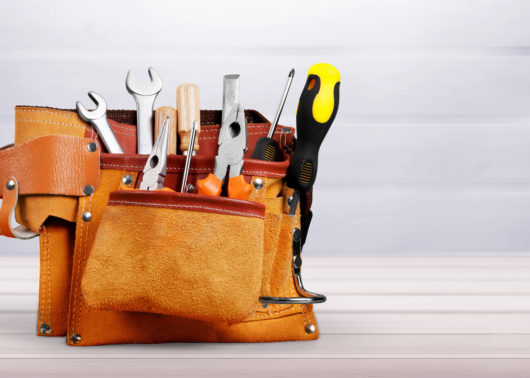
Scary noises, weird gunk and worn-down components: that’s the tip-off trifecta for mixers that need maintenance or repairs.
Weekly mixer maintenance primarily involves checking for unusual sounds or heat, material build-up inside the mixer and wear-and-tear on different components. You might need to replace or lubricate certain parts. The biggest indication of a faulty mixer — and one you want to avoid at all costs — is a paper break, or a failure of your slurry mix resulting in a gigantic mess and hours of downtime.
Nobody wants to clean a huge pile of wasted slurry, which is why it’s essential to schedule time for regular mixer maintenance. You should check for specific issues on a weekly, monthly and yearly basis. Here’s a breakdown of the checks you should make every week, as recommended by an ACS expert.
Stop. Hey, what’s that sound?
The first part of your weekly maintenance check happens before you shut down the system. Check for any excess heat or strange noise coming from the bearings. Then check for unusual sounds coming from the mixing chamber, which could indicate possible damage or foreign objects in the mixer.
Quick and easy. Once that’s done, shut down your process and perform all the necessary safety lockout/tagout procedures before you open the mixer.
The next steps can be done in any order, so we organized them into handy categories for you.
Look for plugs and build-up
It’s much easier to remove material build-up on a weekly basis, before they turn into plugs or cause problems in your system. Remove all traces of build-up inside the mixer to reduce the chances of lumps that cause paper breaks.
Rotor pins are a prime place for slurry to harden and build up, so it’s important to check the base of each pin, including water pins. You should inspect all interior parts of the mixer, including the dry infeed chute scraper fork, the rotor shaft hub and inside the bottom vent holes. Remove and clean the mixer vent to eliminate dust build-up inside the breather pipe.
A worn-out boot will have a rough inner surface — a prime opportunity for build-up and lumps — so you should definitely remove this and inspect the inside.
Some rock sources will cause hardened build-up on the bottom taper surface of the gate vortex, so make sure to check here, too.
Check for wear-and-tear
Many of your inspections for wear will happen in parallel with your checks for build-up, but it’s important to understand what you’re looking for.
Check the rotor pins first. It’s normal for some rotor pins to wear more than others, so you may end up changing some more often. You should also replace lid pins or water pins if they are significantly worn or bent.
A few more things to inspect for wear:
- The dry infeed chute scraper fork.
- The boot.
- The plows and hub ring.
- The tangential gate wedge tip.
- The extractor inlet, outlet parts and donuts.
- The gap between the lid lump ring and rotor.
If any parts are worn, deformed or damaged, they may need to be repaired or replaced according to your shop procedures and mixer manual.
Adjust clearances
Again, this overlaps with checking for wear, but you should always inspect the gap between the rotor and the lid lump ring. If the wear on either lump ring prevents you from keeping the proper clearances intact, replace it. Otherwise, adjust the clearance as per your product run schedules.
Make sure to use the optimal setting for thinner caliper sizes. A scraper replacement will greatly enhance the rotor-to-lid-lump-ring clearance, and we recommend it for those runs of thinner caliper board.
Grease it up
Part of your weekly mixer maintenance also includes lubricating a few parts. The upper and lower mixer bearings need grease regularly, as well as the bronze nut fitting inside the rotor shaft hub. If you can’t see the fitting because of hardened slurry, clean that up and keep greasing.
Study your history and get the right parts!
You might need to adjust the frequency of your inspections to suit your operating conditions, which is why ACS always recommends keeping a historical maintenance log so you can compare notes from week to week. If you need help finding the right replacement part — and quickly — ACS Mixers is here to help. Our parts always fit!
